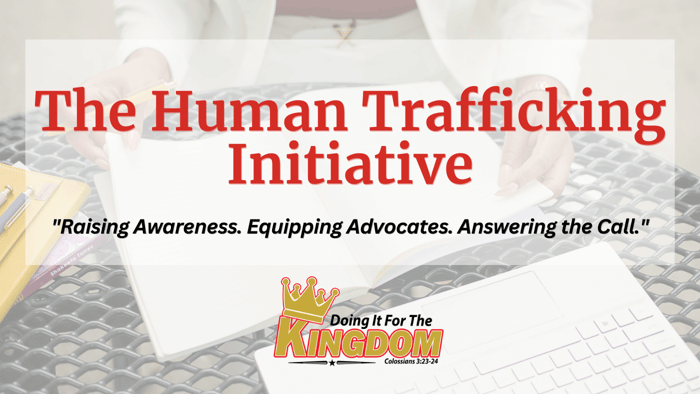Table of Contents
Operation Restore Justice: A Wake-Up Call to Confront Child Exploitation in America
Operation Restore Justice: A Wake-Up Call to Confront Child Exploitation in America
Introduction
 In a world where human trafficking and child exploitation continue to grow in secrecy and complexity, a nationwide effort called Operation Restore Justice has brought a powerful wave of hope. Spearheaded by the U.S. Department of Justice (DOJ) and the Federal Bureau of Investigation (FBI), this large-scale initiative resulted in the arrest of 205 child sexual abuse offenders and the rescue of 115 children across the United States. For Christian leaders, therapists, educators, and advocates, this is not just another news headline—this is a call to intercede, educate, and protect.
In a world where human trafficking and child exploitation continue to grow in secrecy and complexity, a nationwide effort called Operation Restore Justice has brought a powerful wave of hope. Spearheaded by the U.S. Department of Justice (DOJ) and the Federal Bureau of Investigation (FBI), this large-scale initiative resulted in the arrest of 205 child sexual abuse offenders and the rescue of 115 children across the United States. For Christian leaders, therapists, educators, and advocates, this is not just another news headline—this is a call to intercede, educate, and protect.
This blog will explore the operation in detail, examine specific cases and charges, highlight regional data (including North Carolina), and offer practical ways the faith and mental health community can respond.
Key Details of Operation Restore Justice
Dates of Operation: April 28 to May 1, 2025
Announcement Date: May 7, 2025
Scope: All 55 FBI field offices participated
Results:
205 individuals arrested for child sexual abuse-related crimes
115 children rescued from exploitative conditions
Attorney General Pamela Bondi stated: “The Department of Justice will never stop fighting to protect victims—especially child victims—and we will not rest until we hunt down, arrest, and prosecute every child predator who preys on the most vulnerable among us.”
(Source)
This operation highlights just how deeply rooted and widespread exploitation has become. It also shows the importance of unified law enforcement efforts and cross-agency collaboration. While these numbers are sobering, they also speak to the power of swift action, intelligence-sharing, and interagency partnerships when combating an issue as insidious as child trafficking.
Who Was Arrested?
The 205 individuals arrested across the country face charges including:
Production and distribution of Child Sexual Abuse Material (CSAM)
Child sex trafficking
Online enticement of minors
Transporting minors across state lines for illegal sexual activity
Notable Cases Include for Operation Restore Justice:
Jeremy Francis Plonski (Minnesota): A state trooper charged with producing CSAM, facing a minimum of 15 years in prison. His arrest sent shockwaves through the local community, highlighting that even those in positions of authority can abuse their power in unimaginable ways.

Linwood Barnhill (Washington, D.C.): A former police officer previously convicted of trafficking-related crimes. Barnhill is now facing additional charges for continuing to exploit minors in exchange for money. His case demonstrates the potential for recidivism among offenders and the need for accountability.
Mario Garcia Martinez (San Antonio, TX): Arrested with hundreds of files of CSAM. Martinez reportedly admitted to accessing this material during methamphetamine binges, raising concerns about how substance abuse and trafficking-related offenses are often interconnected.
Zaid Mashhour Haddad (Texas): A UT San Antonio professor arrested for possessing child pornography. His access to youth and position of trust further intensify the seriousness of the charges.
These cases collectively remind us that child predators come from all walks of life. They could be neighbors, colleagues, or authority figures. It’s not just about identifying a stereotype—it’s about cultivating vigilance and awareness everywhere.
Regional Focus: North Carolina
In North Carolina, the FBI Charlotte Field Office played an integral role. Among the most notable arrests were:
John Matthew Miller (Wilmington): Charged with sex trafficking of a minor and CSAM possession. Evidence suggested prolonged exploitation and communication with minors online.
Jesse Lonzo Teal (Bolivia): Also charged with online grooming and possession of explicit images. His devices revealed extensive contact with minors via encrypted messaging apps.
These local stories are a sobering reminder: trafficking isn’t just a problem happening somewhere else. It is a local issue. It is in our schools, neighborhoods, and communities.
Other Regional Highlights:
Connecticut: Five individuals arrested for CSAM-related offenses, including Steven Taylor and Ryan Perry, who had thousands of explicit images stored across multiple devices.
(Source)Illinois: Dalton Trader, James Yeager, and Mark Peterson were arrested for various offenses, including attempted enticement of minors and possession of CSAM.
(Source)Houston, Texas: Natalia Flores and four others were indicted for sex trafficking three teen girls aged 14–18. Their exploitation was facilitated via social media platforms and party invitations.
(Source)Georgia: Nine individuals arrested for crimes ranging from CSAM possession to enticing minors for sexual exploitation.
(Source)
What This Means for the Church and the Mental Health Community
If you are a Christian leader, therapist, life coach, or educator, this isn’t just national news—it’s a spiritual alert and professional call to action.
1. Increase Awareness
Be equipped to identify signs of trafficking and abuse:
Sudden changes in behavior or unexplained trauma
Association with older or controlling individuals
Secretive online behavior
Physical signs of trauma or neglect
Church leaders and mental health professionals must commit to trauma-informed care and ongoing education on trafficking prevention. This includes investing in continuing education, collaborating with anti-trafficking coalitions, and offering resources to their communities.
as a place of refuge and
Train all volunteers and staff in mandatory reporting procedures
Invite law enforcement or anti-trafficking experts to speak at community events
Provide parent education on internet safety and trafficking signs
Create avenues for anonymous reporting and survivor support
The Church, in particular, must position itself not only as a place of refuge but also as a watchtower of advocacy, justice, and accountability.
The Growing Threat of Technology in Trafficking
Predators increasingly use social media, gaming platforms, and encrypted apps to target children. Many parents and church leaders are unaware of how deep this issue goes.
Talk openly about:
Grooming tactics and manipulation techniques
Risks associated with seemingly innocent platforms like Roblox or Snapchat
The role of influencers and online challenges in luring youth into exploitation
Parental controls, safety apps, and the importance of monitoring devices
When children are equipped with knowledge and accountability, their vulnerability to online predators decreases dramatically.
The Power of Prayer and Prevention
This operation is proof that prayer, advocacy, and coordination work. Let’s continue to:
Pray for rescued children and their healing
Pray for law enforcement and task forces
Pray for hidden abuse to be exposed
Pray for lasting policy change and church involvement
We can also fast and intercede for God to raise more Christian counselors, foster parents, and advocates who will do the hard work of restoration. Many of these children will need long-term care that addresses their spiritual, emotional, and psychological needs.
Action Steps You Can Take
Learn More: Visit NCMEC or CyberTipline for information and training.
Report: Use FBI Tips to report suspicious behavior.
Raise Awareness: Host a discussion in your Bible study, school, or counseling office.
Support Nonprofits: Donate to local organizations focused on survivor aftercare.
Speak Up: Share this blog, create a podcast, or lead a prayer night dedicated to justice.
Volunteer: Get involved with local shelters, advocacy groups, or court-appointed special advocate (CASA) programs.
Conclusion: We Are on Watch
Operation Restore Justice reminds us that exploitation is real and rampant—but so is the power of unity, prayer, and action. As God’s people, let us rise to the occasion, protect the vulnerable, and be a voice for justice in this generation. May we respond with courage, compassion, and commitment.
FAQs
1. What is Operation Restore Justice?
Operation Restore Justice is a nationwide initiative led by the U.S. Department of Justice and the FBI from April 28 to May 1, 2025. The operation resulted in 205 arrests and the rescue of 115 children who were victims of sexual exploitation and trafficking.
2. How were the individuals arrested connected to trafficking crimes?
The arrested individuals were charged with various offenses, including possession and distribution of child sexual abuse material (CSAM), online enticement of minors, child sex trafficking, and transporting minors across state lines for illegal sexual activity.
3. What role did technology play in these crimes?
Technology was a major factor. Predators used platforms such as social media, gaming apps, and encrypted messaging to groom and exploit children. Many victims were contacted online before being lured into abusive situations.
4. How can I help prevent trafficking in my community?
You can host awareness events, educate parents and youth about online safety, support local anti-trafficking organizations, and report suspicious behavior through the CyberTipline or FBI Tips.
5. What should I do if I suspect a child is being trafficked or exploited?
If you suspect trafficking or exploitation, immediately contact local law enforcement or submit a tip through national resources like the National Center for Missing & Exploited Children or the FBI’s reporting site.


